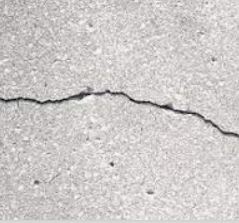One of the sayings in concrete design is “ All concrete cracks…..the purpose of reinforcement is to hold the broken bits together.”
So what does this mean when you are having a new house built?
Surface Cracking – All Concrete
Hairline surface cracking is not unusual particularly in steel power floated house slabs. It can be caused by
-
- Excess water in the mix,
- Too much work when finishing the surface
- Or drying out too quickly when curing.
Although the cracks don’t look very good they shouldn’t affect any subsequent flooring such as tiles.
Full Depth Cracks – House Slabs
House slabs are normally designed as a single slab with reinforcement so that any cracks that occurs will be prevented from opening too far.
Cracks of up to 2mm wide are considered acceptable in a floor slab. If you should get any cracks this wide and want a tiled surface its important to make sure a flexible tile adhesive is used.
Full depth Cracking – Driveways and Paths
Good design of driveways and paths is based on making sure that cracks are encouraged to occur, but only at the location of constructed joints.
This is done by making sure these joints are weaker than the main slab.
For construction details and joint spacing see: Concrete Joints 1
The Standards say “cracks other than at the joints are unacceptable if more than 1.5mm”, although most people say that any crack is unacceptable.
More Information on Standards
See pages 16-19 of the Guide to Standards and Tolerances 2007 available here Victorian Building Authority
For posts on on getting your paths and driveways correct see Concreting
